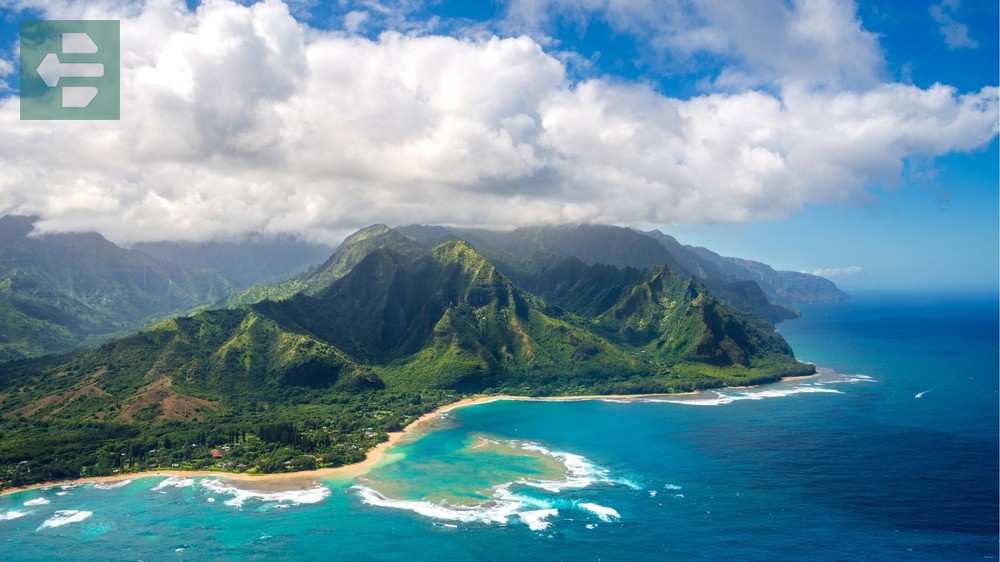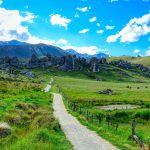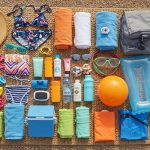The world's best places to travel beaches stretch from Italy's hidden coves to French Polynesia's pristine atolls. Each destination offers something different—pink sands in Indonesia, penguin colonies in South Africa, or turquoise lagoons in the Seychelles.
These fifteen beaches represent the planet's most stunning coastal experiences, from accessible Caribbean paradises to remote Pacific islands that require serious commitment to reach.
List of Contents
- 1. Cala Goloritze: Italy's Secret Amphitheater
- 2. Entalula Beach: The Philippines' Hidden Theater
- 3. Bang Bao Beach: Thailand's Quiet Corner
- 4. Fteri Beach: Greece's Floating Paradise
- 5. Pk 9 Beach: French Polynesia's Mile Marker
- 6. Canto De La Playa: Dominican Republic's Secret Shore
- 7. Anse Source D'Argent: Seychelles' Granite Gallery
- 8. Nosy Iranja: Madagascar's Sandbar Paradise
- 9. Ofu Beach: American Samoa's Coral Cathedral
- 10. Grace Bay: Turks & Caicos' Twelve-Mile Smile
- 11. Turquoise Bay: Australia's Living Aquarium
- 12. Boulders Beach: South Africa's Penguin Colony
- 13. Pink Beach: Indonesia's Rose-Colored Shore
- 14. Shoal Bay East: Anguilla's Two-Mile Crescent
- 15. Detwah Lagoon: Yemen's Hidden Oasis
1. Cala Goloritze: Italy's Secret Amphitheater
Cala Goloritze sits at the bottom of a limestone cliff on Sardinia's east coast. The beach spans just 200 meters, but its white pebbles and electric blue water create an amphitheater effect that makes every visitor feel like they've discovered something sacred.
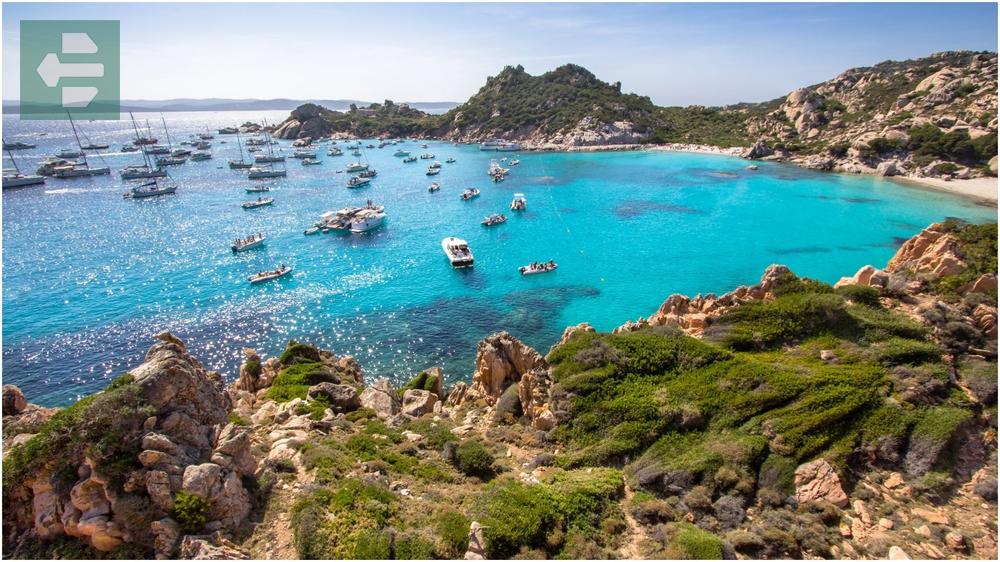
Getting there requires a 90-minute hike through Mediterranean scrubland. The trail winds down steep switchbacks before revealing the cove below.
Local fishermen dock their boats here at dawn, creating ripples across mirror-still water before the day's first swimmers arrive.
Quick Facts:
- Peak Season: June-September
- How to Get There: Hike from Baunei parking area
- Entry Fee: Free
- Suggested Stay: 2-3 days in nearby Baunei
- Sub-locations: Cala Luna, Cala Mariolu nearby
2. Entalula Beach: The Philippines' Hidden Theater
Entalula Beach curves around a protected lagoon in El Nido's Bacuit Archipelago. Limestone karsts rise 300 feet from emerald water, creating a natural theater where every photo looks staged.
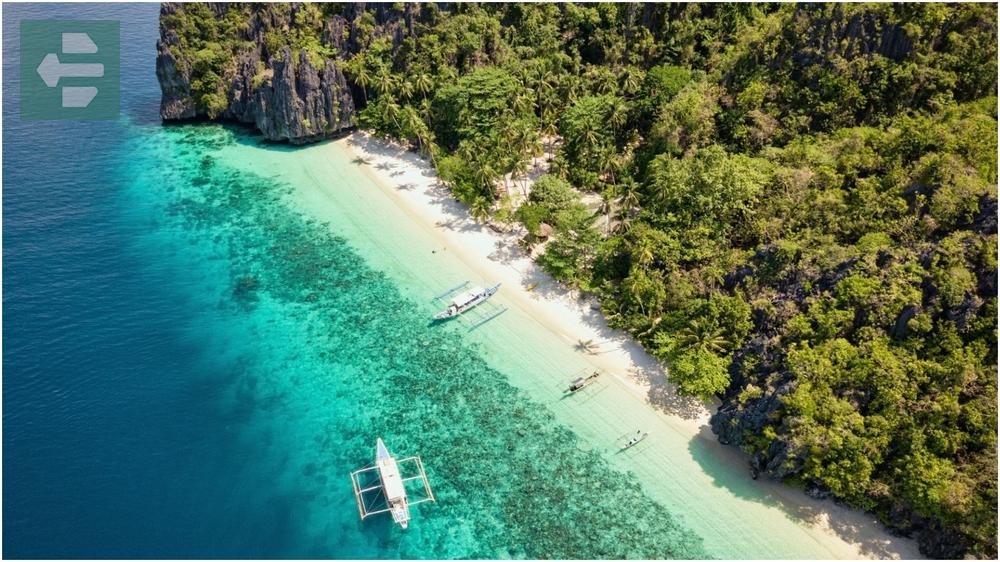
I remember arriving here at 7 AM on a bangka boat, watching the morning light paint the cliffs gold while the water stayed glass-calm. That silence—broken only by the occasional kingfisher—reminded me why some places feel untouched by time.
The beach disappears completely at high tide, so timing matters more than planning.
Quick Facts:
- Peak Season: December-May
- How to Get There: Boat tour from El Nido town
- Entry Fee: From $30 (tour package)
- Suggested Stay: 3-4 days in El Nido
- Sub-locations: Small Lagoon, Big Lagoon, Secret Lagoon
3. Bang Bao Beach: Thailand's Quiet Corner
Bang Bao Beach sits on Koh Chang's western shore, where the jungle meets a crescent of soft sand. Unlike Thailand's more famous beaches, Bang Bao remains largely undeveloped—just a few longtail boats and a handful of locals selling coconuts.
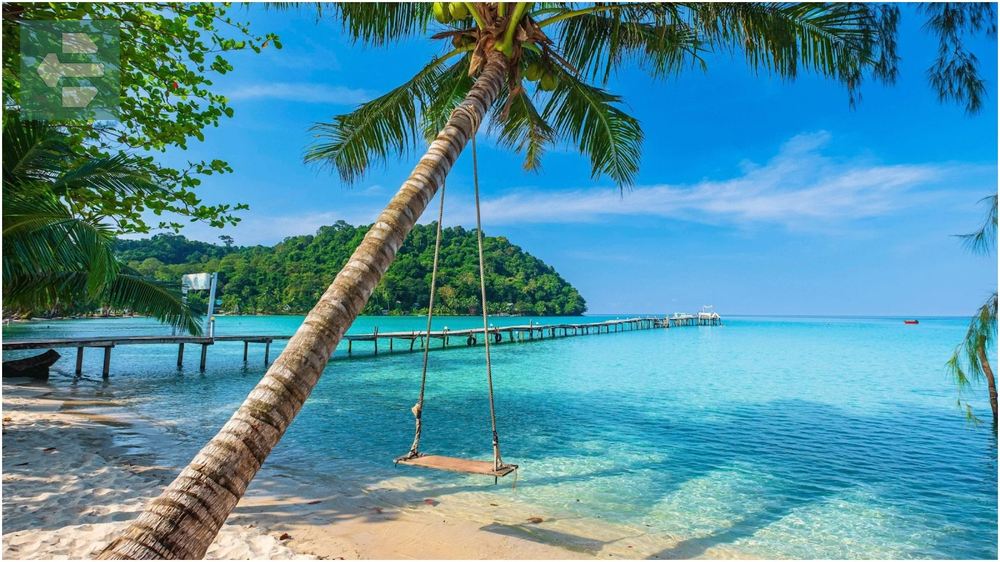
The water stays shallow for 50 meters out, making it perfect for families or anyone who wants to float without thinking about depth.
Visit during sunset when the sky turns purple and the fishing village lights begin flickering across the bay.
Quick Facts:
- Peak Season: November-March
- How to Get There: Ferry to Koh Chang, then songthaew
- Entry Fee: Free
- Suggested Stay: 3-5 days on Koh Chang
- Sub-locations: Bang Bao fishing village, nearby waterfalls
4. Fteri Beach: Greece's Floating Paradise
Fteri Beach hangs between two cliffs on Kefalonia's northern coast. The beach sits 200 feet above sea level, accessible only by a steep 20-minute descent through olive groves and wild herbs.
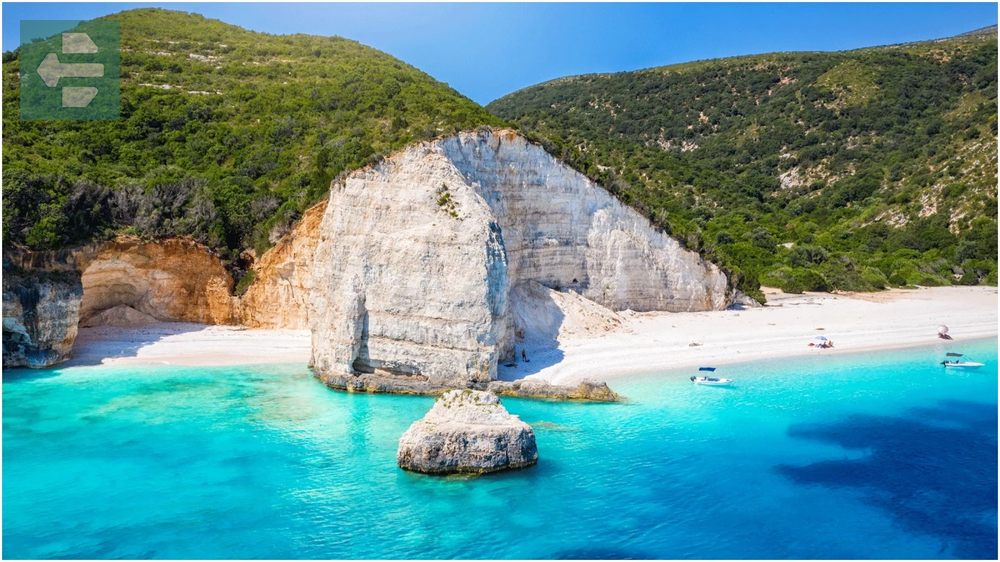
The reward is worth the climb down. White pebbles slope into water so clear you can count fish swimming 20 feet below the surface.
Bring water and snacks—there's nothing here but beach, sea, and the sound of waves against stone. That's exactly the point.
Quick Facts:
- Peak Season: May-October
- How to Get There: Drive to Fteri parking, then hike down
- Entry Fee: Free
- Suggested Stay: 4-5 days in Kefalonia
- Sub-locations: Emblisi Beach, Agios Fokas nearby
5. Pk 9 Beach: French Polynesia's Mile Marker
Pk 9 Beach earned its name from the roadside kilometer marker that marks its location on Tahiti's west coast. The black volcanic sand contrasts with turquoise lagoon water, creating a color combination that exists nowhere else on Earth.
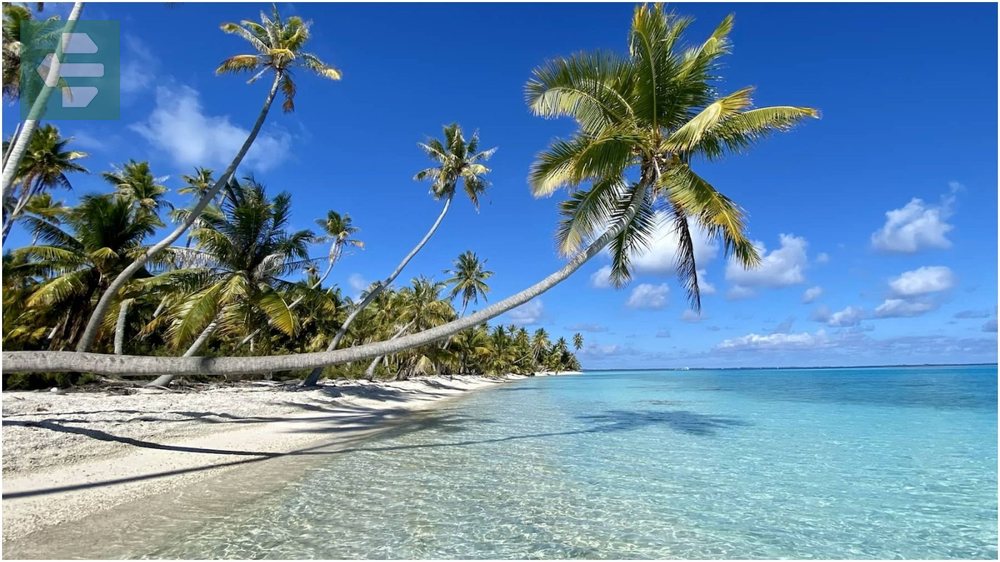
Local families gather here on weekends for barbecues and volleyball games. Join them—Tahitians welcome visitors who respect their space and clean up after themselves.
The reef break creates perfect waves for beginners, while the lagoon stays calm enough for swimming.
Quick Facts:
- Peak Season: May-October
- How to Get There: Drive Route 1 from Papeete
- Entry Fee: Free
- Suggested Stay: 5-7 days in Tahiti
- Sub-locations: Venus Point, Pointe Vénus Lighthouse
6. Canto De La Playa: Dominican Republic's Secret Shore
Canto De La Playa stretches for two miles along the Dominican Republic's northern coast, where the Atlantic Ocean meets a coconut grove that has grown wild for decades.

You have to walk through the grove to reach the beach, following paths that local fishermen have worn smooth over generations. The trees provide natural shade, while the waves provide constant white noise.
This is where you go when you want to disappear for a day without traveling to another continent.
Quick Facts:
- Peak Season: December-April
- How to Get There: Drive from Samaná, then walk through coconut grove
- Entry Fee: Free
- Suggested Stay: 3-4 days in Samaná Peninsula
- Sub-locations: Las Terrenas, Playa Rincón nearby
7. Anse Source D'Argent: Seychelles' Granite Gallery
Anse Source D'Argent looks like someone arranged giant granite boulders for a photo shoot, then forgot to clean up. These ancient rocks, smoothed by millions of years of Indian Ocean waves, create pools and channels between sections of powder-soft sand.

The beach faces west, making it perfect for sunset watching. Palm trees lean over the sand at impossible angles, providing shade during the hottest part of the day.
Take your time here. Every angle reveals a different composition of rock, sand, and water.
Quick Facts:
- Peak Season: April-May, October-November
- How to Get There: Fly to La Digue, then bicycle or ox-cart
- Entry Fee: From $5 (L'Union Estate entry)
- Suggested Stay: 4-5 days on La Digue
- Sub-locations: Grand Anse, Petit Anse nearby
8. Nosy Iranja: Madagascar's Sandbar Paradise
Nosy Iranja consists of two islands connected by a sandbar that appears and disappears with the tide. When the tide is right, you can walk from one island to the other across pristine white sand surrounded by turquoise water on both sides.

I spent three hours here during low tide, watching the sandbar slowly vanish beneath rising water while sea turtles surfaced nearby. The experience felt like witnessing geography in real time.
Local Malagasy guides know the tide schedules by heart—trust their timing.
Quick Facts:
- Peak Season: April-November
- How to Get There: Boat from Nosy Be
- Entry Fee: From $20 (boat tour)
- Suggested Stay: 2-3 days in Nosy Be
- Sub-locations: Nosy Komba, Nosy Tanikely nearby
9. Ofu Beach: American Samoa's Coral Cathedral
Ofu Beach faces the Pacific across a coral reef that creates a natural swimming pool during calm weather. The beach sits beneath volcanic cliffs covered in tropical rainforest, where fruit bats hang from banyan trees during the day.

This is one of the most remote beaches in American territory. Getting here requires two flights and a boat ride, but the isolation creates an experience impossible to find anywhere more accessible.
The coral here is pristine—some of the healthiest in the Pacific. Bring reef-safe sunscreen.
Quick Facts:
- Peak Season: May-October
- How to Get There: Fly to Pago Pago, then island-hopper to Ofu
- Entry Fee: Free
- Suggested Stay: 3-4 days on Ofu Island
- Sub-locations: Olosega Island, Nu'uuli Falls
10. Grace Bay: Turks & Caicos' Twelve-Mile Smile
Grace Bay stretches for twelve miles along Providenciales' northern shore, where Caribbean water stays shallow and warm year-round. The sand feels like cornstarch between your toes, and the water color shifts from pale turquoise to deep sapphire depending on depth and cloud cover.

This beach consistently ranks among the world's best for good reason—it combines accessibility with perfection. You can walk from luxury resorts or find quiet sections where the only footprints are yours.
Conch Bar Caves provide afternoon shade when the sun gets intense.
Quick Facts:
- Peak Season: December-April
- How to Get There: Fly to Providenciales International
- Entry Fee: Free
- Suggested Stay: 5-7 days in Providenciales
- Sub-locations: Conch Point, Turtle Cove nearby
11. Turquoise Bay: Australia's Living Aquarium
Turquoise Bay sits within Ningaloo Marine Park, where the coral reef lies just 100 meters from shore. You can snorkel directly from the beach into an ecosystem that includes whale sharks, manta rays, and more than 250 fish species.

The beach itself curves in a perfect crescent, with white sand that stays cool even during Australia's brutal summer heat. Prevailing winds create consistent waves for body surfing.
Visit between March and July for whale shark season—these gentle giants cruise the reef edge like living submarines.
Quick Facts:
- Peak Season: April-October
- How to Get There: Drive from Exmouth, Western Australia
- Entry Fee: Free
- Suggested Stay: 4-5 days in Exmouth
- Sub-locations: Yardie Creek Gorge, Cape Range National Park
12. Boulders Beach: South Africa's Penguin Colony
Boulders Beach hosts a colony of African penguins that waddle between granite boulders and swim in protected coves. These endangered birds nest just meters from designated swimming areas, creating an interaction between humans and wildlife that feels both natural and surreal.

The penguins show no fear of visitors—they'll walk past your beach towel like they own the place. Because they do.
Early morning visits offer the best penguin activity before tour groups arrive from Cape Town.
Quick Facts:
- Peak Season: October-March
- How to Get There: Drive from Cape Town to Simon's Town
- Entry Fee: From $3
- Suggested Stay: 2-3 days in Cape Peninsula
- Sub-locations: Foxy Beach, Seaforth Beach nearby
13. Pink Beach: Indonesia's Rose-Colored Shore
Pink Beach gets its color from crushed red coral mixed with white sand, creating a subtle rose hue that intensifies during golden hour. The beach faces the Flores Sea on Komodo Island, where currents bring nutrient-rich water that supports some of Indonesia's healthiest coral reefs.

Komodo dragons roam the island's interior, but they rarely venture onto the beach during daytime. Still, local guides accompany all visitors for safety.
The contrast between pink sand and electric blue water creates photographs that look too saturated to be real.
Quick Facts:
- Peak Season: April-September
- How to Get There: Boat tour from Labuan Bajo, Flores
- Entry Fee: From $25 (Komodo National Park)
- Suggested Stay: 3-4 days Labuan Bajo area
- Sub-locations: Rinca Island, Padar Island nearby
14. Shoal Bay East: Anguilla's Two-Mile Crescent
Shoal Bay East curves for two miles along Anguilla's northern coast, where trade winds keep the Caribbean at perfect swimming temperature year-round. The sand here is so fine it squeaks underfoot, while the water stays shallow for 200 meters out.

Local beach bars serve rum punches and grilled lobster, but finding a quiet section requires just a short walk from the main access points.
This is where you go when you want Caribbean perfection without compromise or complication.
Quick Facts:
- Peak Season: December-April
- How to Get There: Ferry from St. Martin, then taxi
- Entry Fee: Free
- Suggested Stay: 4-5 days in Anguilla
- Sub-locations: Island Harbour, Sandy Ground nearby
15. Detwah Lagoon: Yemen's Hidden Oasis
Detwah Lagoon sits on Socotra Island, where pink flamingos wade through shallow water while dragon's blood trees dot the surrounding hills. This UNESCO World Heritage site remains one of the planet's most isolated ecosystems.

The lagoon changes color throughout the day—from pale green at dawn to deep turquoise at noon to silver at sunset. Endemic birds that exist nowhere else on Earth nest in the mangroves.
Visiting Socotra requires careful planning and local guides, but the experience offers a glimpse of what Earth looked like before mass tourism.
Quick Facts:
- Peak Season: October-March
- How to Get There: Charter flight to Socotra, then 4WD
- Entry Fee: Varies (permit required)
- Suggested Stay: 7-10 days on Socotra Island
- Sub-locations: Homhil Plateau, Dixam Plateau nearby
These fifteen beaches represent more than destinations—they're gateways to experiences that exist nowhere else on Earth.
Some require serious planning and long journeys. Others hide in plain sight, waiting for travelers who value discovery over convenience.
Pack light. Bring reef-safe sunscreen. Leave your expectations at home and let each beach reveal itself on its own terms.
The best places to travel beaches don't advertise themselves. They wait patiently for visitors who understand that paradise isn't always convenient, but it's always worth the effort.
